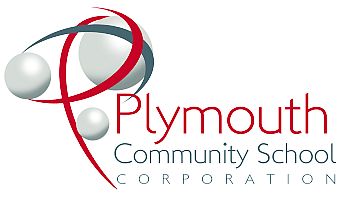 The Plymouth School Board heard a report on the school corporation’s facilities during their first meeting of 2015 on January 6. The report was complied after a year-long study by administrators at the various buildings and a 16-20 member local task force. There was also a study completed by an outside study group.
The Plymouth School Board heard a report on the school corporation’s facilities during their first meeting of 2015 on January 6. The report was complied after a year-long study by administrators at the various buildings and a 16-20 member local task force. There was also a study completed by an outside study group.
Superintendent Daniel Tyree said, “This is just a way of getting started. The community was promised that there would not be another major building project until 2020.” The last major project, Project K, was in 2002 and cost some $26 million. Tyree said, “The Board will have to study this report and then create priorities.”
The major item that is being considered is the need to replace all of parts of Lincoln Junior High. A long list of problems was presented to the Board to substantiate the need for action concerning LJH. Among those were the following:
Over recommended capacity
Rooms offer no flexibility for learning
Oldest and most expensive repairs
Parking issues and congestion
Operationally inefficient
Security entrance very expensive
Infrastructure and systems near end of life
Items mentioned in infrastructure problems included underground plumbing and drainage; HVAC and control systems are inefficient; and the roof is nearing the end of life. The roof already has 3-5 layers.
The task force also identified a number of other priorities for upgrades. One recommendation is to put security entrances at all the buildings. The security entrances at Plymouth High School and Menominee Elementary are completed. Plans are already in place to construct security entrances at both Jefferson Elementary and Riverside Intermediate. According to those compiling the report, building a security entrance at Lincoln Junior High would be nearly impossible and very expensive.
The report included a need to install emergency generators in all buildings and playground upgrades at the elementary schools. Additionally, they noted that some athletic facilities need to be eliminated ,while others need to be upgraded.
The playground at Menominee Elementary is scheduled for an upgrade in the summer of 2015. Upgrades at other elementary schools will need to be coordinated with PTO organizations.
Two buildings, Riverside and Menominee, already have emergency generators. The generators at PHS needs to be replaced, while other school buildings may be able to use less expensive alternatives.
The report shows that the basketball floor and football facilities are at the end of their life. The basketball floor replacement cost is estimated at $150,000 and the school may look for private donations for naming rights to replace the flooring. The cost for upgrades for the football facilities could very well reach $2.5 million. Among the needs are new turf, fencing, home bleachers, and press box along with renovations to the concessions, restrooms, and storage areas.
It was also noted that there needs to be one good football field and track. The task force determined that it would be impossible to maintain two football fields. Considerations could include artificial turf at the PHS field for varsity, JV, 7th-9th grade, and some junior Rockie football games. Other uses for the field would be for band practices and contests. It was mentioned that they could continue to maintain the PHS track and use it for all levels.
Plans for replacing the pool that was eliminated at PHS may need to be coordinated with the city and other community partners. The following considerations were listed in conjunction with building a pool:
A pool cannot and should not be the maintained burden of one at entry
Partnership is needed to build and maintain a pool
Solicit funds for naming rights
Building combination with new junior high
Ensure public parking availability
Ensure ease of public use during the day
However, financing for any of the projects leads to a number of considerations. The debt structure of the corporation will not allow a major building project until 2020. According to administrators, there is still room to bond $2 million and the Capital Project Fund continues to see a decrease ($400K this year). They can also look to private funding for naming rights as a normal part of projects both now and in the future.
Carol Anders Correspondent














